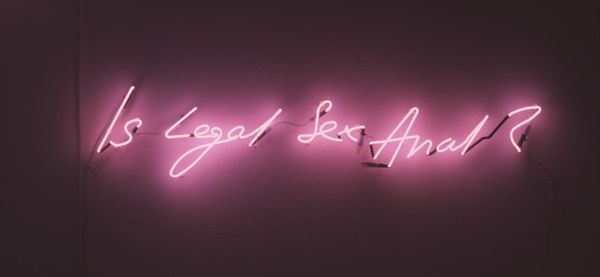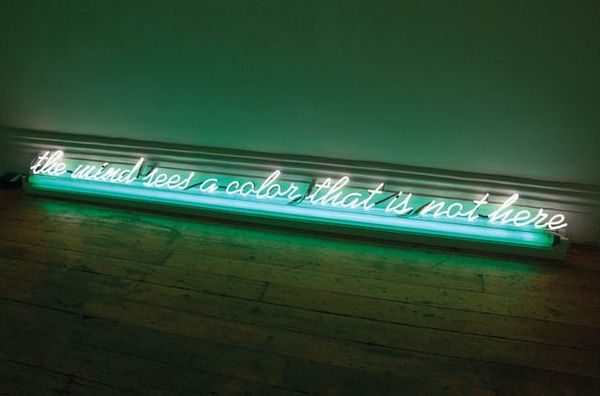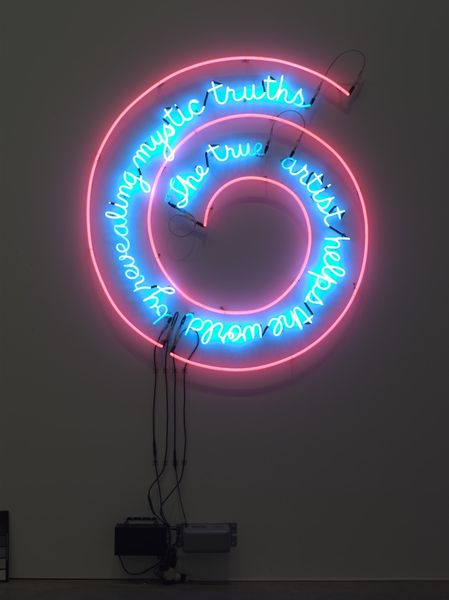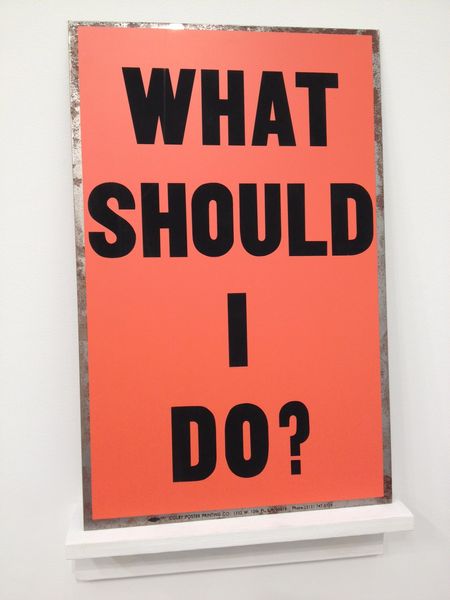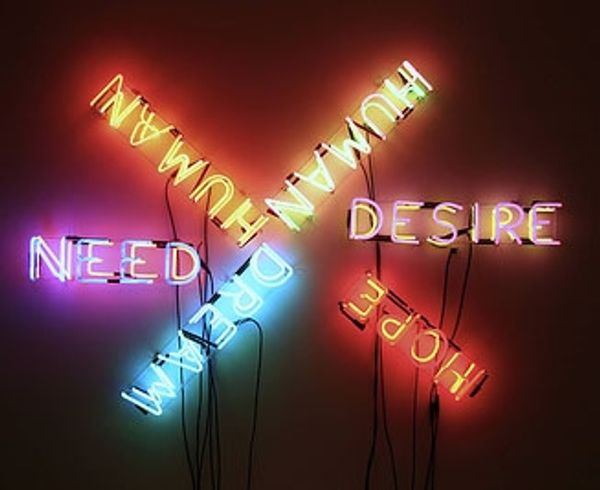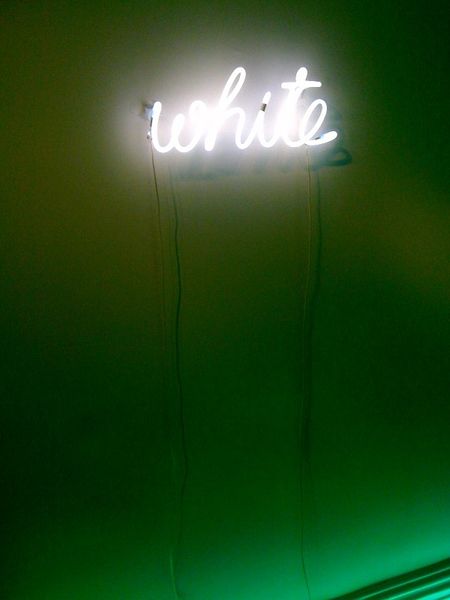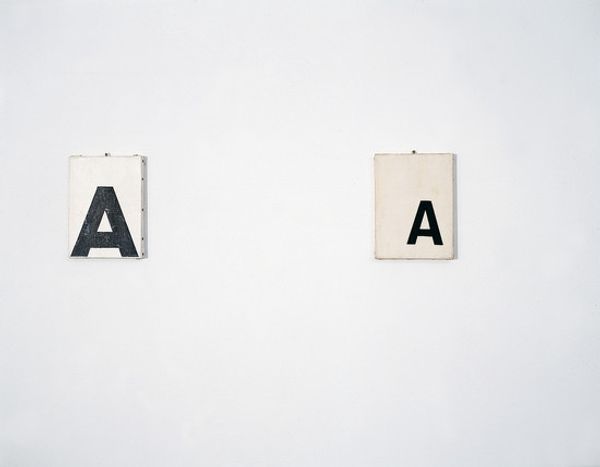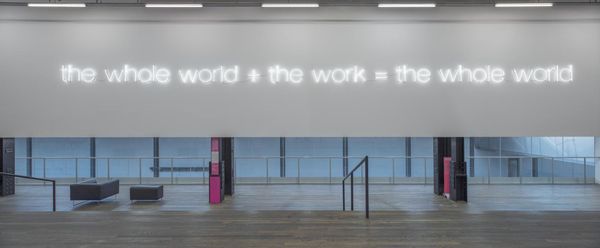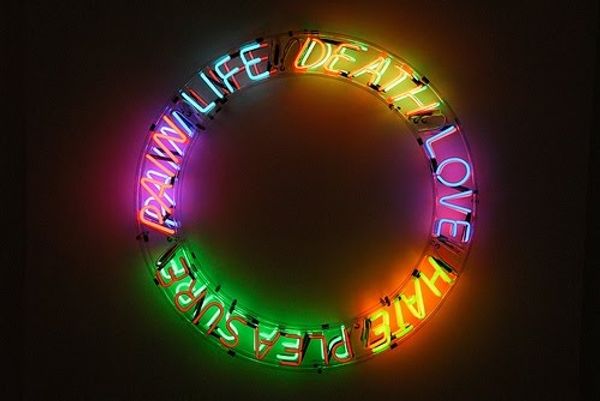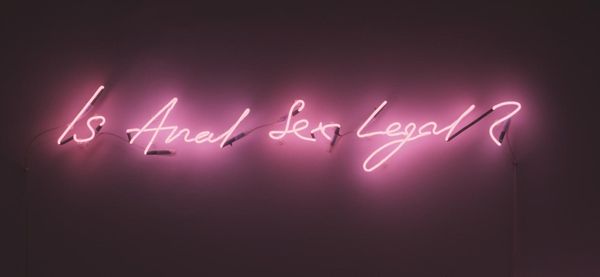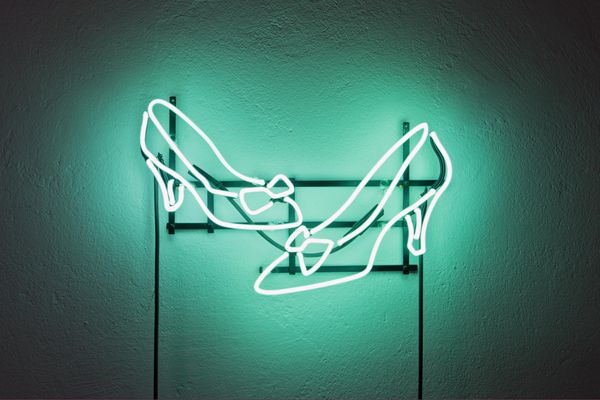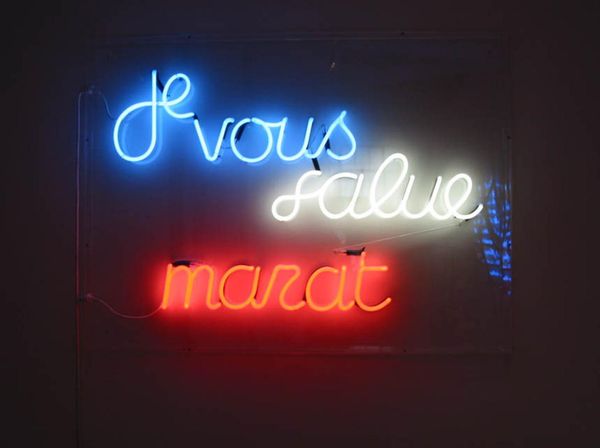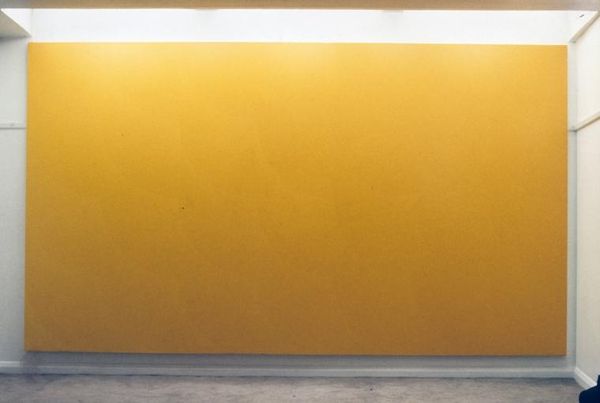
Dimensions: object: 505 x 500 x 60 mm
Copyright: © Martin Creed | CC-BY-NC-ND 4.0 DEED, Photo: Tate
Editor: This is Martin Creed's "Work No. 890: DON’T WORRY," a neon sign installed at the Tate. The bright yellow light against the stark white walls is visually striking, but I'm curious about its placement in the corner of the room. What do you see in this piece, considering its form and material? Curator: The very *form* of neon immediately suggests commercial signage, a language of advertising promising solutions. Consider how Creed inverts this expectation through a direct, almost banal statement. The work's impact lies precisely in its stark juxtaposition of medium and message. Does it succeed in alleviating anxiety through visual means, or does it simply highlight the pervasiveness of worry itself? Editor: That's a great point. The simplicity almost feels ironic given the medium. Thanks for your insight! Curator: Indeed, the conceptual tension is the core of this piece. Thank you for your careful observations.
Comments
tate 6 months ago
⋮
http://www.tate.org.uk/art/artworks/creed-work-no-890-dont-worry-ar01149
Join the conversation
Join millions of artists and users on Artera today and experience the ultimate creative platform.
tate 6 months ago
⋮
Work No.890 DON’T WORRY 2008 consists of the phrase ‘DON’T WORRY’ spelled out in yellow neon capital letters. The neon tubes are made of yellow soda glass with white phosphor powder and are 15 mm thick. They are mounted directly onto the walls using clear polycarbonate tubes. The work is always displayed in a corner so that the word ‘WORRY’ is hung on the adjacent wall to the word ‘DON’T’ but at the same height. It is displayed high enough to be out of reach so visitors invariably have to look upwards in order to view it. Each word is capped and sealed and has an electrode fixed to the end of the neon tube, with a pipe for re-gassing. Fittings, wires and tubing that appear between the letters are painted out with white emulsion. There are joins visible on the letters as each letter exceeds the length of standard neon tubes. The piece was originally manufactured by a company called Neon Circus. The life expectancy of a neon artwork is around five to ten years, regardless of whether it is on display, and so this work will have to be re-made in the future.
